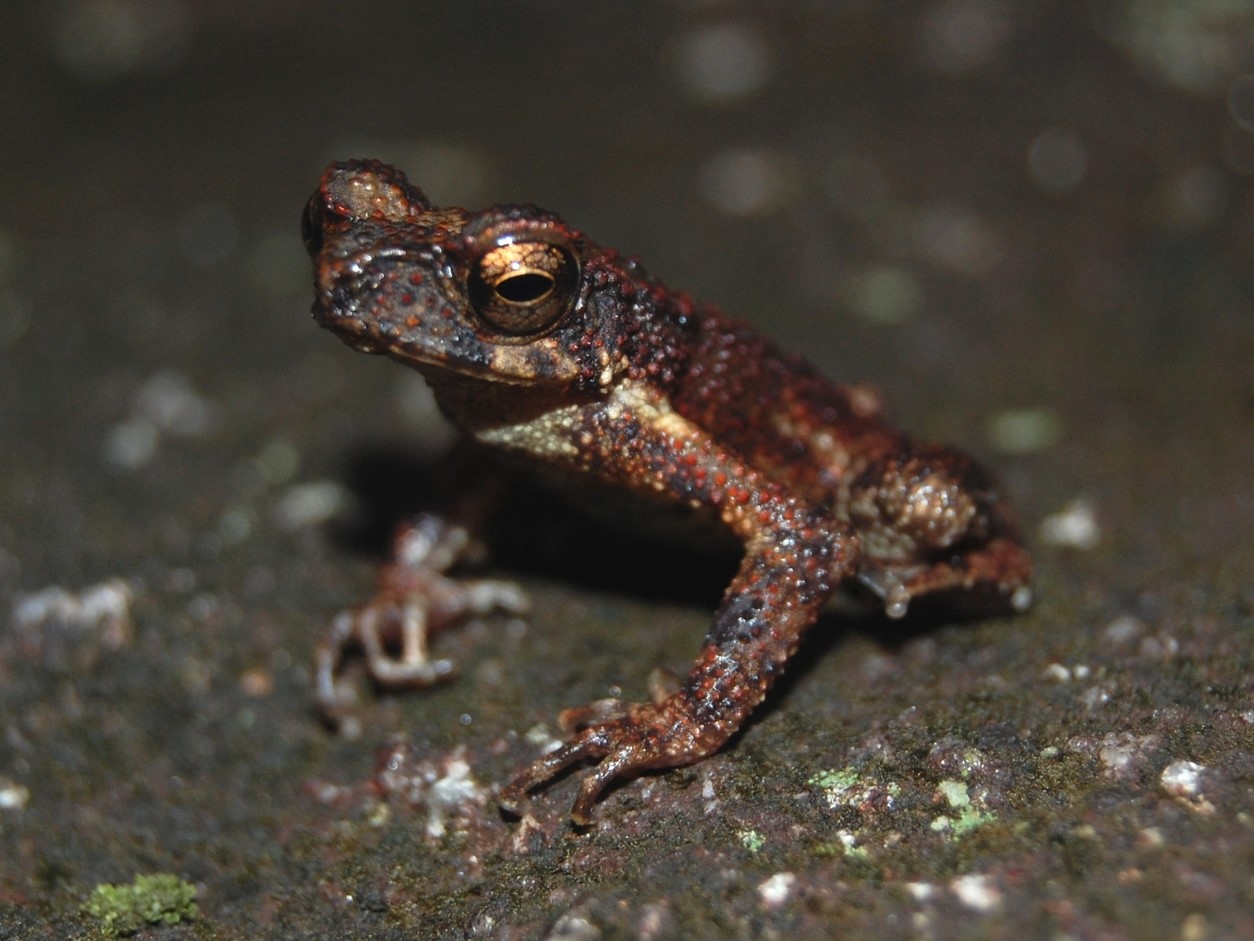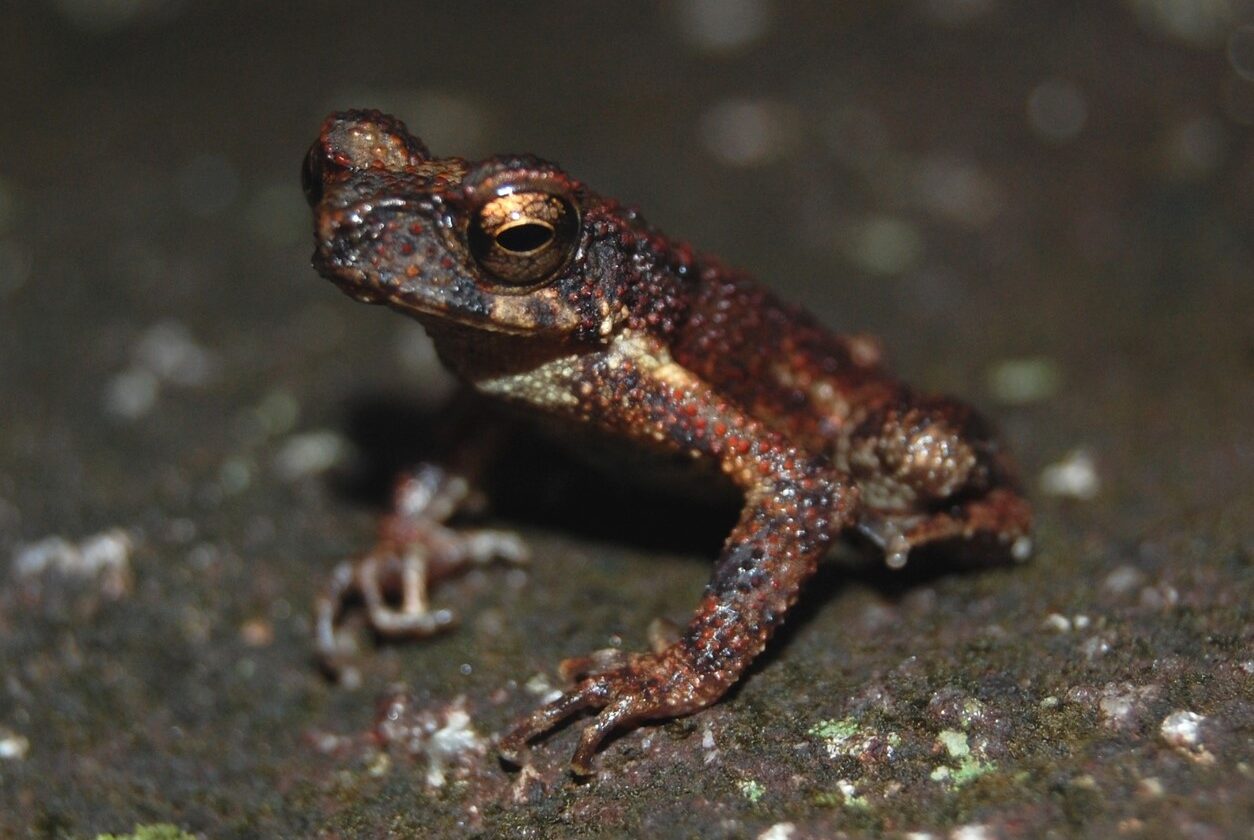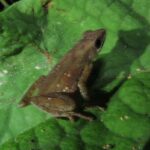- Introduction: Unveiling a Lost Amphibian Treasure
- Taxonomy and Classification
- Natural Habitat: Cloud Forest Sanctuaries
- Physical Characteristics: Adaptations in Miniature Perfection
- Behavior and Life Cycle: Quiet Lives in Misty Shadows
- Ecological Role: Guardians of Environmental Balance
- Threats and Conservation Status: Fighting to Secure a Fragile Future
- Cultural and Scientific Significance: Beyond Just Another Frog
- Conclusion: Celebrating and Protecting Sri Lanka’s Tiny Jewels
Introduction: Unveiling a Lost Amphibian Treasure#
Deep within the misty cloud forests and emerald hills of Sri Lanka’s central highlands hides a diminutive yet astonishing creature—the Kandy dwarf toad, scientifically named Adenomus kandianus. For over a century, this distinctive toad remained shrouded in mystery, fueling assumptions of its extinction. Miraculously rediscovered in recent years, it symbolizes both hope for biodiversity and a stark reminder of the fragility of nature.
Known affectionately as “Kandy,” after the historic Sri Lankan city near its initial discovery, this amphibian embodies the intricate beauty and ecological complexity of the tropical habitats it calls home. Gaining global attention among conservation circles, Adenomus kandianus enthralls naturalists not only as a “lost-and-found” species but as a powerful symbol for wilderness protection and ecological restoration.
Taxonomy and Classification#
Belonging to the Bufonidae family—commonly referred to as “true toads”—the species Adenomus kandianus represents one of two species within its genus, Adenomus, both endemic to Sri Lanka. Originally described by the notable herpetologist Albert Günther in 1872, this species shares a genus with another rare amphibian, Adenomus kelaartii, collectively known as Sri Lankan dwarf toads.
Located within a specialized phylogenetic branch that showcases geographic isolation and evolutionary uniqueness, Adenomus kandianus demonstrates characteristics that highlight Sri Lanka’s unparalleled amphibian biodiversity—a nationwide distinction often overshadowed in broader discussions about tropical biodiversity hotspots.
Natural Habitat: Cloud Forest Sanctuaries#
Adenomus kandianus occupies a very narrow geographic range restricted to Sri Lanka’s central wet highland regions, primarily around the Knuckles Mountain Range and nearby forested sanctuaries. Unlike many of their amphibian counterparts that favor lowland rainforests or humid streamside habitats, this species prefers montane cloud forests—a lush realm characterized by persistent mist, vibrant moss-covered logs, and cool mountain streams trickling gently over polished stones beneath canopy-filtered sunlight.
The toad’s survival hinges on specialized habitat conditions: consistently high humidity, cool temperatures, and ample vegetation for cover. These montane habitats are continuously enveloped in clouds, forming ecosystems rich in mosses, ferns, and orchids. Here, the daily white mists serve not merely as poetic scenery, but as critical moisture that enables the physiological survival and reproduction of these sensitive amphibians.
Interactions between this species and its unique habitats are delicately intertwined—losing one means losing the other. Its limited distribution makes it extremely vulnerable to disruptions such as deforestation, agricultural encroachment, climate change-driven alterations in moisture patterns, and increasing human incursions into previously remote mountain areas.
Physical Characteristics: Adaptations in Miniature Perfection#
The Kandy dwarf toad’s appearance is both captivating and practical. Measuring only about 2 to 3 centimeters in length as an adult—fitting neatly into a teaspoon—the toad’s diminutive size immediately catches attention. Its skin, coarse and adorned with granular tubercles, blends perfectly with its moss-covered surroundings, displaying varying shades of brown, olive, or greenish hues interspersed with irregular darker patches and stripes.
Large, expressive eyes provide acute vision at night, essential for hunting insects under the cover of darkness. Long, slender limbs specialized for precise leaps and climbing modest elevations offer agility that compensates for their small size. Enlarged toe pads further facilitate climbing on vertical terrains, a necessity in the uneven cloud forest terrain.
These physical characteristics exemplify evolutionary refinement, where ecological niches shape amphibian forms and behaviors, emphasizing how intimately frogs and their habitats evolve in concert.
Behavior and Life Cycle: Quiet Lives in Misty Shadows#
Feeding and Hunting Techniques#
Primarily nocturnal, Adenomus kandianus reveals itself only under the cloak of nightfall, hunting small insects, spiders, beetles, and ants beneath logs or along leaf-littered forest floors. Employing patient ambush tactics, these frogs remain motionless, their camouflaged bodies virtually invisible. As unsuspecting prey scuttles past, the frog swiftly extends its sticky tongue, capturing its meal in fractions of a second—a play performed nightly, unseen by human eyes.
Mating Rituals and Parental Care#
Breeding occurs during rainy seasons, with males recognizing environmental cues indicating stable water availability crucial for larval development. Male toads position themselves near slow-flowing mountain streams, emitting soft, melodic calls to lure prospective mates. Upon successful pairing, females deposit strings of eggs among moist vegetation or in water-filled depressions, carefully selecting secure, secluded locations that favor offspring survival.
Tadpoles hatch shortly thereafter, undergoing rapid development adapted to these ephemeral pools. Their life stages occur quickly, from aquatic larvae developing delicate tails, feathery gills, and gradually evolving lungs and limbs. The transformation from tadpole to adult marks an emblematic milestone for amphibians, symbolizing nature’s intricate balance of aquatic and terrestrial ecosystems.
Ecological Role: Guardians of Environmental Balance#
Adenomus kandianus plays a subtle yet profoundly crucial ecological role within Sri Lanka’s montane ecosystems—functioning as an indicator species whose presence signals healthy environmental conditions. Preying primarily on insects helps maintain ecological balance by controlling insect populations naturally, curbing potential outbreaks of pest species and indirectly influencing plant community health.
Simultaneously, the species serves as prey for larger predators inhabiting these cloud forests—including snakes, birds, and small carnivores—forming a significant link within interconnected food chains. The presence, or indeed absence, of this frog in its habitat provides clear signals about environmental disturbances, pollution, climate change patterns, and the overall vibrancy of forest habitats.
Threats and Conservation Status: Fighting to Secure a Fragile Future#
The International Union for Conservation of Nature (IUCN) lists Adenomus kandianus as critically endangered, citing its exceedingly narrow range and severe habitat disruptions. Accelerated habitat loss due to agriculture, expanding settlements, logging, and climate alterations compound threats to its survival, causing rifts in an already limited distribution.
Efforts by conservation groups in recent years have surged following the toad’s rediscovery, with targeted initiatives such as habitat protection and restoration, research programs aimed at population monitoring, and community-based environmental education. Scientists and wildlife officials collaborate closely, leveraging both traditional ecological knowledge and modern conservation science, illustrating effective grassroots wildlife protection.
Cultural and Scientific Significance: Beyond Just Another Frog#
Beyond ecological roles, the narrative of rediscovering Adenomus kandianus has inspired artists, writers, and communities alike, becoming a symbol of hope and resilience throughout Sri Lanka. Traditional stories from local villages often highlight these unique animals, reflecting broader cultural respect—and sometimes reverence—for local biodiversity.
Scientifically, this species offers compelling case studies relevant to evolutionary biology, ecological resilience, and conservation theory. Every newly uncovered aspect of its ecology adds knowledge crucial to global amphibian conservation strategies, illuminating how best to recover populations and safeguard ecosystems in biodiversity hotspots worldwide.
Conclusion: Celebrating and Protecting Sri Lanka’s Tiny Jewels#
As we collectively celebrate the rediscovery of the Kandy dwarf toad, let us also remember our shared stewardship responsibilities. The story of Adenomus kandianus resonates beyond amphibiology circles, delivering lessons on conservation urgency, biodiversity appreciation, and the resilience embedded in nature’s unnoticed corners.
Awareness and action converge in protecting delicate wildlife like the Kandy dwarf toad. By continuing to support research, community education, and habitat protection, we reflect our society’s broader commitment to safeguarding Earth’s magnificent natural heritage. Indeed, the resilience of a tiny frog hidden in mist-covered forests symbolizes hope for a harmonious coexistence between humanity and the fragile ecosystems we share.








